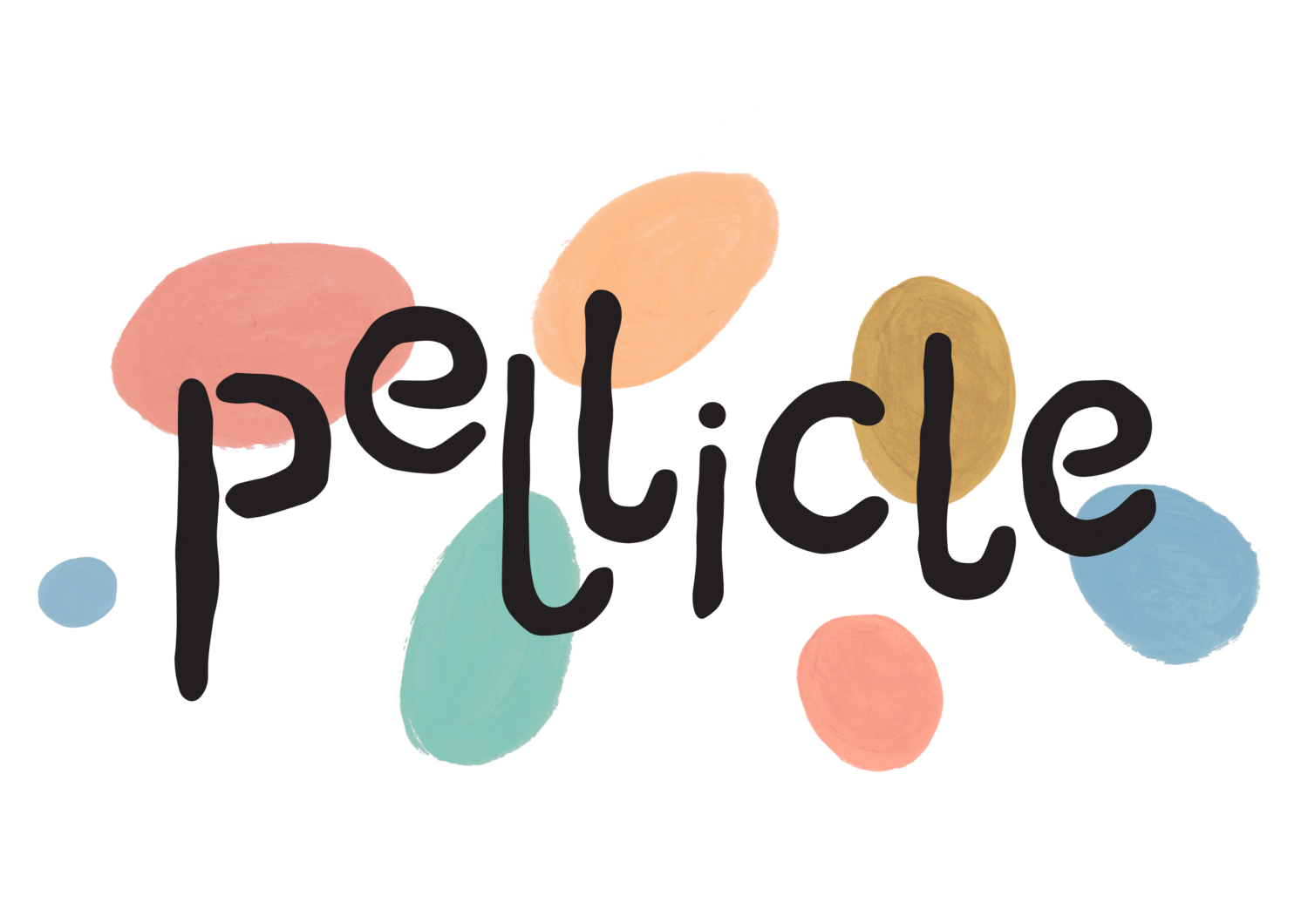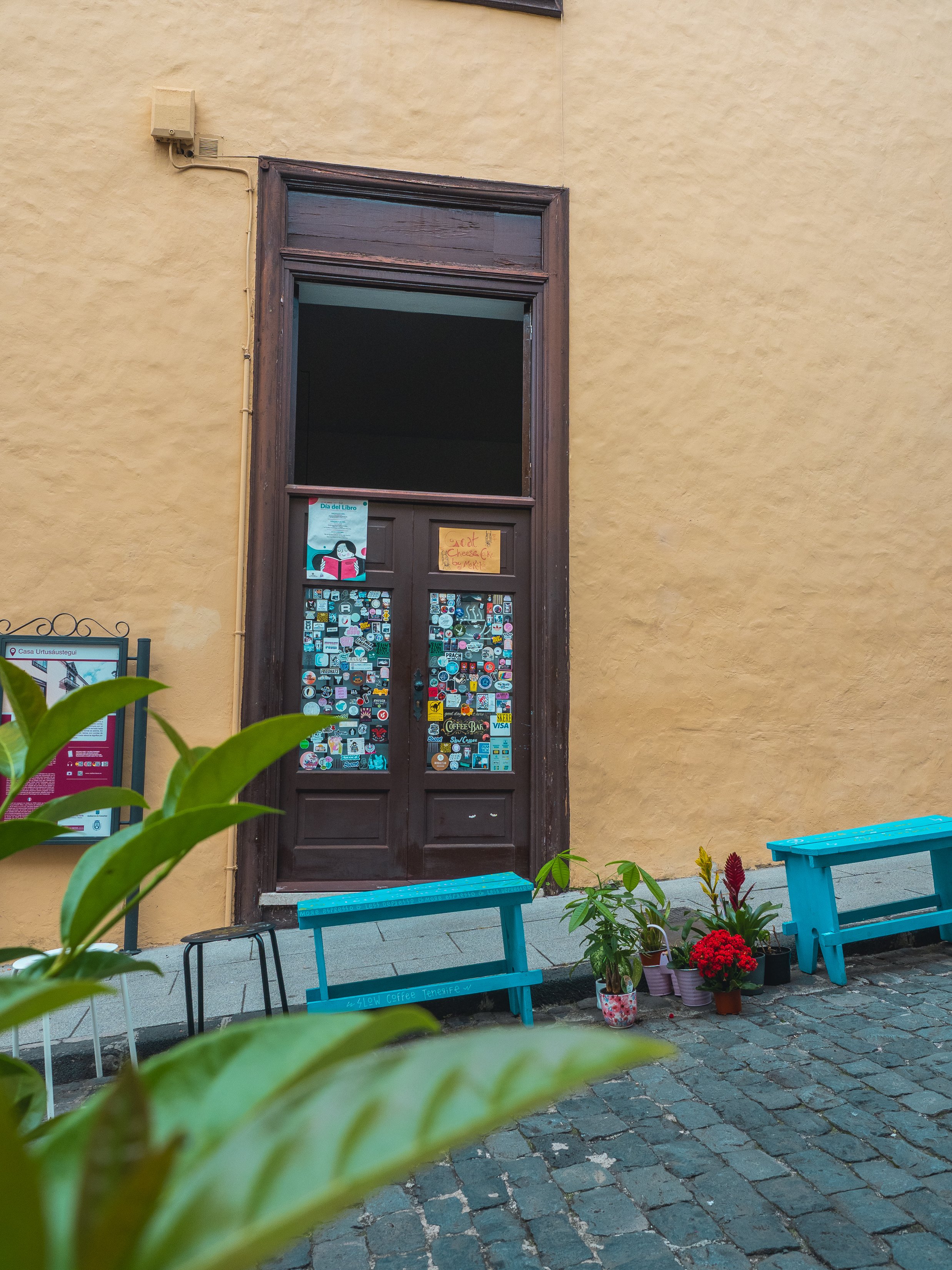Con Altura — Making Wine and Preserving Culture in Tenerife’s Vineyard Heartland
By the edge of Puerto de la Cruz’s tiny harbour in northern Tenerife, a seafood grill operates out of a converted shipping container. Boys fish from the harbour walls, and girls jump into the choppy water, screaming—it’s mid-March, and only 20° Celsius outside. In front of me is a basket of wrinkled, charcoal-grey potatoes, served with pots of freshly made mojo rojo and verde. My beer is a Cruzcampo, brewed in Seville by Heineken—you can’t even get Canarian-brewed (and AB InBev-owned) Tropical here.
Photography by Andy Cannon
This is what I expected from Tenerife. Long ago, the balance shifted here, from sparsely populated rural island to tourist enclave. In the 1880s, a colonial home was converted into Tenerife’s first hotel—a place for wealthy musicians, socialites, and aristocrats to take in the island air. Development hasn’t stopped since. Today, there are two airports. There is a zoo, there are water parks. The sprawling construction of hotels has continued apace, blocking the views of “eternal spring” that the island was once famous for.
Now, for the majority of visitors, there is nothing in Tenerife but high-rise apartments and purpose-built activities. If you only wanted to stay within your hotel resort complex, it would be easy to do so, and many do.
I, of course, am also a visitor here. Judgement as a tourist is as hypocritical as it comes. I am staying in a holiday let in the former fishing hamlet of Puerto de la Cruz, which could make someone a very nice home. I am no better or worse than anyone else who flew here to enjoy the sunshine.
From the outside, Tenerife’s story looks like a simple one, of monopoly and conquest. But it’s not the breweries or the hotel companies, or even the Spanish authorities back in Iberia, that run Tenerife. It’s Mount Teide—the active volcano that dominates the island, and which continues to shape and nourish it. From the plastic seats of the harbourside café, dense white clouds completely conceal his existence. But he is there. And if he weren’t, this place would not exist.
***
Juan Felipe García—call him Felipe—is the owner of Bodega Finca Marañuela, one of a growing number of tiny wineries that cultivate indigenous Canarian grapes by strictly sustainable methods. He makes wine with his sisters at their family farm on the slopes of Mount Teide, at the edge of La Orotava, Tenerife’s vineyard heartland.
Part town, part botanical garden, La Orotava is an uncannily beautiful place. The tropical greenery is lush, casting cooling shadows across the tiled pavements. Even the abandoned scrubland and overgrown building sites are alive with wildflowers, bees, and butterflies.
In amongst the visitor centres, terrace bars, and boutiques, there are signs that La Orotava has its own vibey subculture. Graffiti murals have made their way up from Puerto de la Cruz, and shops like Slow Coffee, co-owned by Argentinian native Natalia Cambiaggio, serve coffee sourced from independent roasters.
The cafe’s laid-back manner suits its clientele of local skaters, surfers, hipster tourists, and world champion cyclists who have come to the mountain for altitude training. (At one point, Wout Van Aert flies past our car in full tuck—a complete coincidence, you understand.)
This sense of bounteous vibrancy is, of course, a legacy of tourism. Before aeroplanes full of visitors with foreign money began landing en masse, La Orotava, like many areas of Tenerife, was ravaged by centuries of unstable Spanish rule and two world wars.
“My parents were children of both postwar periods and the dictatorship,” Felipe says. “I’m a child of democracy. They all experienced hunger and fear. I didn’t, so I can say that, by comparison, I’m privileged.”
However, Felipe’s so-called privilege still entailed growing up in poverty. “We lived in unfinished houses, the walls were just bare cement blocks,” he says. “Many streets were dirt roads, unpaved, where we played in the dust and rocks. Water was scarce in homes, and many times we had to fetch it from small public fountains scattered around the village and carry it back using whatever containers we had.”
In the 1970s and ’80s, the wealth that the new wave of visitors brought with them built infrastructure and provided jobs. Those public fountains now form beautiful statues in the town, representing abundance. Felipe, seeing the opportunities for himself, studied a degree in tourism in the early ’90s, and then worked for 21 years in the industry, rising up from hotel receptionist to commercial director in the south of the island.
“Until 2019—just six years ago—I thought I would retire sitting at a desk,” he says. But that isn’t what happened at all.
***
Felipe’s bodega, a few hundred metres beneath Teide’s peak, is his personal Eden, full of papaya and citrus trees. Banana leaves flutter in the winds that blow ceaselessly. The grapevines are all trained in the local “cordón trenzado” method, braided together and staked slightly above the earth. This method harks back to a time in the not too distant past, when the people of Tenerife had to make the most of what little arable land they had. Why plant only vines when you could also make space for potatoes beneath them?
Felipe is cutting the grass around his vines with a strimmer when I arrive, and he wanders over to meet me with an easy gait.
You would never know he suffered a double thrombosis in his left leg when he was 46. “The doctor told me I had to be signed off work for rest, for one year. I told her she was crazy,” he says. “That doctor, ignoring my protests—as she should have—signed my sick leave, looked up from the paper she was writing on, and with a smile, told me: ‘What happens, happens for a reason’.”
Once he grew well enough to become bored of bedrest, Felipe spent more time helping his then 77-year-old father on his farm. He and his sisters, Mercedes and Sephora, took on their father’s land in 2021, and from there, Bodega Finca Marañuela was born.
All three siblings have a deep respect for nature, and a love for their island home that transcends its daily difficulties. After a trip to South America, where she worked on organic farms, Mercedes brought back ideas of permaculture, biodynamics, and food sovereignty to her family bodega—ideas that have become central to their operation.
As well as wine, Bodega Finca Marañuela cultivates coffee. The high-altitude humidity of Tenerife’s thick cloud cover creates an ideal microclimate for its production.
“There was no master plan, no roadmap,” Felipe says of the bodega’s development. “Everything happened naturally, as I myself was also transforming and growing into the person I now feel I’ve become—deeply rooted in the land and in my origins.”
***
As I drive up alarmingly steep roads and back streets between fields and wildfire-damaged pine forests, the white peak of Mount Teide appears straight ahead—he may be the reason La Orotava flourishes, but he is shy. I barely make his acquaintance until I’m above the clouds and the fog line at the volcano’s caldera, glowing in the sharp-focus UV intensity, almost hearing the sizzling light rays. The air smells faintly of sulphur. He is alive.
I think of him later, while sitting in a beautifully renovated storehouse in the old quarter of Puerto de la Cruz. These stone arches are home to Tasca Ihüey, a restaurant dedicated to modern Canarian cuisine—cuisine that honours the tropical climate and the produce that comes from the volcanic soils.
Here, owners Claudio Martínez and Melisa Mastroianni serve natural wine from the Canaries, paired with dishes that change according to what’s fresh and available at local markets. Alongside a glass of Listán Negro from Finca Marañuela—deep and berried, with a tannic sweep like a paintbrush—I marvel at a simple starter of semi-sundried tomato and parmesan cream, which bursts with savoury, meaty, jewelled flavours. It is studded with pomegranate and bouquets of fresh herbs, and elevated by care, attention, and great wine.
Another day, I head across town to Vinoteca Con Pasión, which has the largest selection of Canarian wine in the region. Thankfully, most are available by the glass from the shop, or from the restaurant next door. It’s from here that I buy a bottle of Listán Blanco pét-nat, made by La Orotava winemaker Dolores Cabrera. I save it for later and drink it on my balcony, savouring its dry acidity and almost abrasive minerality, the sun drenching my glass in golden light.
Dolores began making wine in 2013, after many years spent growing grapes for other producers. She built the first wine cellar in what is now the La Orotava DO. Her four vineyards are all organic, and she impresses her passion for sustainable farming methods on every local farmer she speaks to.
““[Dolores’] wines feel like excavations—you are not just sitting on the volcano, you are tasting him.””
Her wines named La Araucaria are her most expressive—bottles made exclusively with indigenous Listán Negro or Listán Blanco grapes, from vines between 50 and 100 years old. Her vines are also trained in the cordón trenzado method, trailing long, woven tails across the breadth of her personal sections of paradise.
To Dolores, the most important thing is nature. Although my limited Spanish makes conversation difficult, I still learn so much about the wines she makes from how they taste. They show her deep respect for the land she’s currently custodian of. Her wines feel like excavations—you are not just sitting on the volcano, you are tasting him.
***
On a Sunday, the Atlantic waves crashing 12 meters high into the breaks on the other side of the tiny harbour, a protest comes through Puerto de la Cruz. At first, a trickle of people in yellow t-shirts laugh and run ahead, and then the sound of clapping, drumming, and chanting carries through the streets.
From above on my balcony, every sign is visible. The protesters—a huge group of local residents—are furious about the pollution of a famous surfing beach farther along the coast. It’s a popular place for people to visit and relax, to swim and spend their days off. Since October 2024, nobody has been allowed in the sea there due to raw sewage dumping.
Their signs call for better regulations and political accountability. Some point the finger at governmental neglect and a resulting cover-up (the Canarian authorities deny this). The rapid and continuing increase of tourist populations visiting Tenerife has no doubt caused systems to crack under the pressure. The protesters astutely call for the same groups who encourage tourism’s growth to support and improve the safety and infrastructure of the island they all share.
There is more nuance to each protest organised on Tenerife than any headline would have you believe. Locals are desperate for better pay and cleaner public spaces. They want the businesses that profit from the industry to take responsibility for the damage that over-tourism can cause, and to support the preservation of a unique ecosystem. There are people who just want to be able to afford to live in the town where they work, and to enjoy their island.
According to a 2024 survey by the Canary Islands Institute of Statistics (ISTAC), 1.4 million people in the islands—more than half—are living in poverty or financial hardship. Just because tourism brings money to Tenerife, it doesn’t mean the people here are seeing much of it.
When he talks about Tenerife, Felipe describes a fragile landscape that’s especially vulnerable to globalisation and exploitation. For his community, tourism has brought a higher standard of living, but the island has reached something of a saturation point, putting local culture and identity at risk.
For him, it’s not that tourists are not welcome. It’s just that the island cannot physically sustain the demand—much of which is created by the tourism industry, not by the visitors themselves.
“The Canary Islands are what they are because of their very specific—and also very fragile—climatic conditions,” says Felipe. “The kind of tourism that devours territory, resources, and landscapes must be kept in check. Likewise, the neocolonialism and neoslavery brought to the islands by large tourism corporations must end. Otherwise, the social unrest, marginalization, and widespread impoverishment they generate among the local population will eventually erupt—and when it does, it will be uncontainable.”
He does believe change is possible, however, and is adamant that others on his island believe so too.
“I’d like to show … that another world is possible—that there is hope, and that things can be done differently. And I believe our little plot of land is a testament to that.”
***
There is a certain way that the Canary Islands make me feel. The sensation of being so far from home, of knowing that the nearest landmass over the blue horizon is the sand of the Sahara, can send me deep into myself. In Tenerife I am perched on a rock, battered by Atlantic waves, sipping wine made from indigenous vines that are hundreds of years old. For this place to be known primarily for its sports bars, cheap drinks, and English breakfasts makes me angry, which in turn makes me feel like a horrendous snob. Who am I to tell people how to enjoy their hard-won holidays?
I am privileged to be here, and often unsure that I should even make the journey. The Canaries are struggling to keep up with an inflated demand for affordable holidays. Just like in Barcelona, another place I love, locals have grown tired of coming second to the visiting crowds, and I know I cannot blame them.
Is there a right way to come here? To talk to the people who are shepherding Tenerife’s land, to taste their wine and tell their stories? Is it better or worse to share the beauty of this island so ravaged by rampant tourism? What does Teide think of us?
““I feel a great responsibility—and also a duty as a human being—to care for and carry forward this small piece of land that has transformed me as a person.””
I don’t know how to settle it. But I have a video on my phone of waves crashing into the harbour walls at Puerto de la Cruz, and I watch it when I need a moment of peace. I think about the wines I’ve tried in the midst of their desert island homelands all the time—obsessively, you might say. Every protest here is the collective action of local people trying to preserve these special things. I do not see their chants as anti-tourist. Their messages of sustainable tourism are vital, and they need to be heard by the people with the power to support them.
“I feel a great responsibility—and also a duty as a human being—to care for and carry forward this small piece of land that has transformed me as a person,” Felipe tells me when I visit his bodega.
His voice, calm and resolute, gives me hope that a way will be found, through demonstration and change, to benefit the people of the Canaries and protect their rare islands.












































